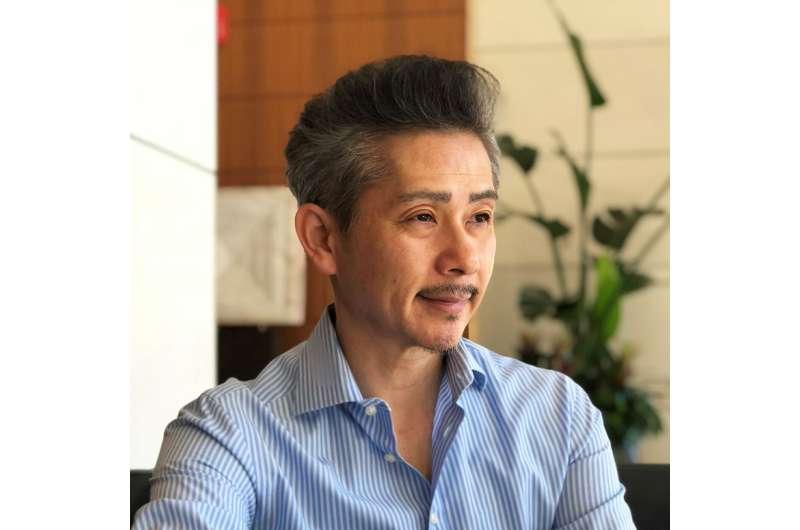This article has been reviewed according to Science X's editorial process and policies. Editors have highlighted the following attributes while ensuring the content's credibility:
fact-checked
trusted source
proofread
Researchers develop 'game-changing' dental implant technology

A team of UCLA School of Dentistry researchers led by Takahiro Ogawa, D.D.S., Ph.D., has culminated a decade of dental implant research with the development of a cutting-edge technology that ensures near-perfect osseointegration, faster healing times, and significantly reduced complications for patients.
A device blasting one minute of ultraviolet (UV) light treatment on titanium implants—done chairside immediately prior to an implant procedure—has recently come to market and holds opportunities for applications beyond dentistry.
"We have entered a new era in dental implantology," said Dr. Ogawa. "This UV technology not only enhances the effectiveness of dental implants but also improves the quality of life for patients. The possibilities are limitless, and I am incredibly excited about the potential impact on oral and overall health."
Dr. Ogawa and colleagues in the Weintraub Center for Reconstructive Biotechnology team identified a key obstacle in the advancement of dental implant science, which had stagnated for three decades: A layer of hydrocarbons naturally deposited on implant surfaces called titanium pellicle, hindering the integration process. This is also associated with significant post-op complications, with peri-implantitis (gum disease around implants) occurring in 35%–40% of patients.
In response, the team developed a method to remove these hydrocarbons via UV light, which took 48 hours in early trials. Researchers gradually reduced UV treatment times to 12 minutes, but performing the procedure chair-side just before implant surgery only became feasible with their one-minute hydrocarbon removal breakthrough in late 2022. The process is chronicled in an article published in the Journal of Functional Biomaterials, authored by Dr. Ogawa and his team.
The impact of this technology is profound. UV-treated implants exhibit nearly 100% bone integration, doubling their anchoring capability and reducing bacterial susceptibility by 60% compared to untreated control implants. This means faster healing, lower risk of complications, and increased suitability for a larger portion of the patient population, including aging patients, smokers, and those with diabetes and osteoporosis among other conditions.
A follow-up journal article in which Dr. Ogawa is the primary author, published Oct. 29 in Cells, demonstrates how one-minute UV treatment induces unprecedented action of gingival (gum) cells to seal the implants, limiting bacterial invasion and reducing incidents of peri-implantitis.
"Our goal is to eradicate peri-implantitis," said Dr. Ogawa.
Additionally, the technology allows for more versatile occlusion, eliminating the need for smaller implant crowns and reducing the number of required bridge implants.
Dr. Ogawa is energized by the potential use of UV-treated implants in the broader medical world.
"Orthopedic implants like hip joint reconstruction and spine fixation show a high incidence of revision surgery and complications. I believe UV-treated implants will help mitigate them," he said.
More information: Toshikatsu Suzumura et al, Decomposing Organic Molecules on Titanium with Vacuum Ultraviolet Light for Effective and Rapid Photofunctionalization, Journal of Functional Biomaterials (2022). DOI: 10.3390/jfb14010011
Toshikatsu Suzumura et al, Vacuum Ultraviolet (VUV) Light Photofunctionalization to Induce Human Oral Fibroblast Transmigration on Zirconia, Cells (2023). DOI: 10.3390/cells12212542




















